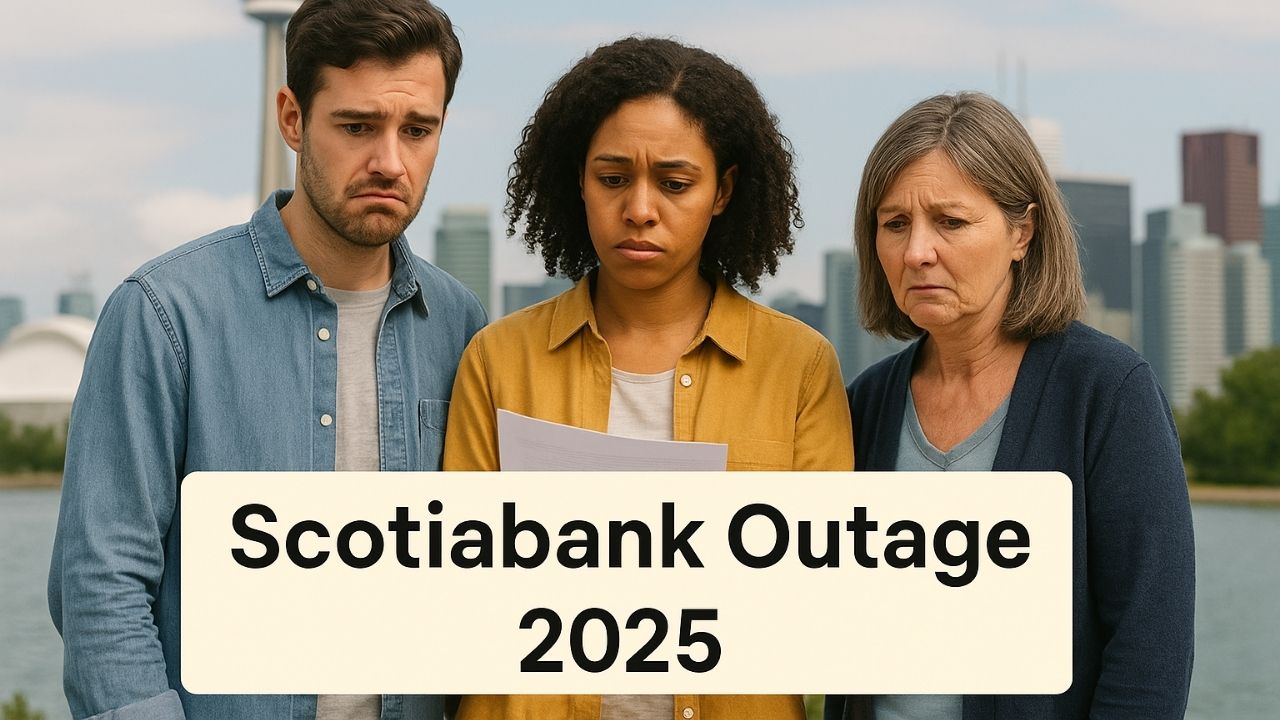Scotiabank customers across Canada have faced major inconveniences due to a technical outage in May 2025, which originated from a third-party vendor failure. Although the bank announced that the initial issue had been resolved, many users have continued to experience disrupted services. The complications include inability to access real-time balances, initiate transfers, and complete payments, particularly through mobile and online platforms.
The timing of the disruption could not have been more challenging. The first week of May is when most Canadians pay bills, rent, and other recurring obligations. The banking system failure during this period created widespread concern, especially among clients using MomentumPLUS Savings accounts, who reported significant delays in transaction processing and visibility.
While the bank has communicated its awareness and ongoing efforts, users have expressed dissatisfaction with the lack of accurate updates and recovery timelines. Financial operations remain hampered for many, turning routine banking tasks into a source of stress and uncertainty.
Third-Party Infrastructure Breakdown: Core of the Incident

The primary cause of the service outage was a disruption within a third-party vendor’s system, which hindered Scotiabank’s ability to update balances, process direct deposits, and facilitate inter-account transfers. The failure impacted both the web and mobile app experiences, essentially locking customers out of their funds without prior warning.
According to the bank’s official statement, teams are working alongside the vendor to stabilize operations. However, the dependency on external systems and the absence of robust fallback protocols delayed the restoration process and intensified the public response.
This incident has reignited discussions around digital risk management in the banking sector, especially the growing reliance on outsourced platforms to handle critical customer data and transaction functions.
Timeline of Notable Technical Incidents at Scotiabank
Recent service issues have revealed recurring concerns about digital resilience. The table below presents a timeline of major incidents that preceded the current outage.
| Period | Disruption Type | Actions Taken by Scotiabank |
|---|---|---|
| July 2024 | Cheque and direct deposits failed to reflect in user accounts | Refunds issued for overdraft and NSF transaction fees |
| November 2024 | Scheduled maintenance caused widespread downtime of card services | Late fees and interest reversed for affected users |
| May 2025 | Third-party glitch delayed transactions and disabled account updates | Partial restoration underway; no clear fix date given |
These recurring events show a pattern of system instability, and users are increasingly questioning whether Scotiabank has implemented adequate technical safeguards for continuity of operations.
Financial Inaccessibility: Effects on Everyday Users
The current disruption has had a direct impact on personal and household finances, with customers reporting failed rent payments, interrupted bill processing, and unsuccessful e-transfers. Even after the vendor issue was supposedly resolved, many accounts failed to reflect updated balances, leaving users uncertain about their financial standing.
A significant portion of affected customers reported problems such as:
- Incorrect or outdated account balances after logging in
- Declined payments due to system validation failures
- Automatic transfers not being processed or reversed
- Scotiabank mobile app crashing during login or loading
These symptoms varied across users, but those using MomentumPLUS Savings accounts were disproportionately affected, possibly due to how those account types sync transaction data through external systems.
Customer Sentiments and Social Media Reactions
Numerous clients took to platforms like X (formerly Twitter), Reddit, and Scotiabank’s own forums to share their frustrations. The tone of conversation ranged from disappointment to anger, with many pointing out the lack of transparency and proactive communication from the bank.
Here’s a sample list capturing the types of experiences shared:
- “I’m unable to pay rent on time because the app still doesn’t show my balance.”
- “This isn’t just technical—this is affecting my credit score due to missed payments.”
- “Scotiabank says the problem is fixed, but I still can’t use my savings account.”
In response to these concerns, the bank stated it would reimburse charges for failed transactions, but this statement was not accompanied by a defined timeframe for when full service would resume.
Support Channels and Suggested User Actions
As customers await complete restoration, Scotiabank has provided a set of customer service channels and steps that individuals can take to protect their financial activity and receive assistance.
| Support Mechanism | Details & Availability |
|---|---|
| Customer Service Line | 24/7 availability for urgent issues and escalation |
| Banking App Chat | Limited hours, designed for quick account-specific inquiries |
| Official Web Notices | Periodic updates and incident reports via Scotiabank’s site |
| In-Branch Support | Available during business hours, depending on location |
Customers facing continued issues are encouraged to take the following steps:
- Save all failed transaction data: Use screenshots or receipts to document errors or missing funds.
- Monitor balance changes closely: Keep track of automatic deductions and credits to verify bank-side corrections.
- Reach out through multiple channels: In case of unresponsive service through one platform, try another.
Is Digital Banking Resilient Enough?
This prolonged outage has underscored the fragility of modern digital banking systems when integrated with third-party technologies. As banks outsource more backend operations, they become increasingly vulnerable to vendor-side failures, as seen in this case.
While outsourcing is essential for cost efficiency and technology upgrades, accountability mechanisms must be built into the architecture. Banking institutions need:
- Redundant systems to take over during outages
- Real-time transparency dashboards for users
- Faster incident response and rollback strategies
This event also serves as a wake-up call for regulators, who may now look more closely at vendor compliance, data recovery policies, and digital continuity planning in Canada’s financial sector.
Recovery Efforts Underway, But Trust Wavers
Scotiabank’s May 2025 outage is more than a momentary failure—it has become a case study in how modern banking infrastructure can falter under pressure. While efforts to fix the core issue are ongoing, the impact on everyday customers’ lives and financial responsibilities remains substantial.
Going forward, Scotiabank and its peers in the Canadian banking sector must enhance infrastructure robustness, customer communication, and vendor oversight. Only with consistent service reliability can public trust in digital banking be restored.



